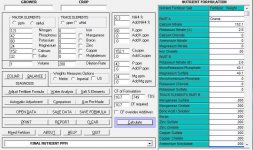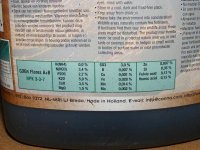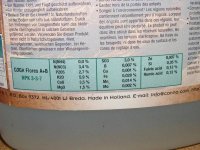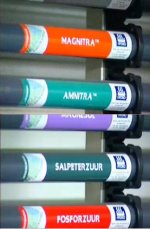funkymonkey
Member
Hello folks
Like many people, I long ago realised that 99% of bottles in the hydro store are way overpriced and very dilute. Therefore I became interested in learning what's in these products and making my own alternatives much cheaper from raw ingredients. I don't know much if any chemistry but I can do maths and mix common salts with water to make nute mixes.
Here's a great example of how simple a lot of nute formulations are, this is the formula for original Hammerhead (the 0-9-18 labelled one), courtesy of mullray:
Mono Potassium Phosphate 107g
Potassium Sulphate 68g
Magnesium Sulphate 4g
Those salt values are for one litre of stock solution, basically you put the salts into a litre bottle, add distilled water and shake till it all dissolves et voila, you have a litre of Hammerhead for a tiny fraction of the retail cost.
I'm trying to find other recipes and formulas so this thread is to gather as many recipes, tips and info in one place as possible, so fire awat guys and post up any info you have!
Like many people, I long ago realised that 99% of bottles in the hydro store are way overpriced and very dilute. Therefore I became interested in learning what's in these products and making my own alternatives much cheaper from raw ingredients. I don't know much if any chemistry but I can do maths and mix common salts with water to make nute mixes.
Here's a great example of how simple a lot of nute formulations are, this is the formula for original Hammerhead (the 0-9-18 labelled one), courtesy of mullray:
Mono Potassium Phosphate 107g
Potassium Sulphate 68g
Magnesium Sulphate 4g
Those salt values are for one litre of stock solution, basically you put the salts into a litre bottle, add distilled water and shake till it all dissolves et voila, you have a litre of Hammerhead for a tiny fraction of the retail cost.
I'm trying to find other recipes and formulas so this thread is to gather as many recipes, tips and info in one place as possible, so fire awat guys and post up any info you have!







